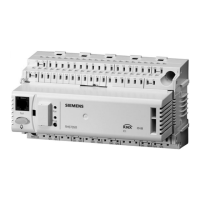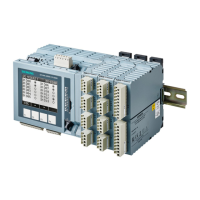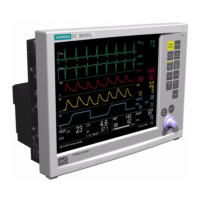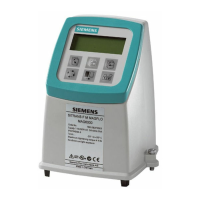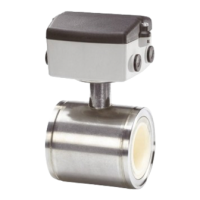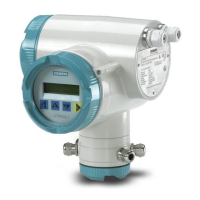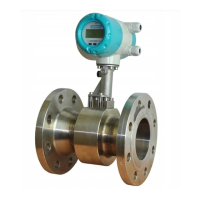Fire Safety & Security Products
Building Technologies
1583_o_en_−−_5
83
08.2005
5.11.1 Functions on level 3. zone
Submenu 4. addressable line
to define line type, number of devices, link devices
to define device parameters
to define zone parameters
to define element parameters
to link conventional lines to zone (if available)
to check configuration before exit the programming mode
to delete all user data
to read actual line configuration as installed
to define control outputs
CONFIGURATION 1. line
(c) 2. device
3. zone
4. element
5. line ’collective’
6. CHECK configuration
7. CLEAR configuration
8. AUTOM. configuration
9. CONFIG ConTrol−ZONES
Functions as displayed Selectable options/Remarks
### ZONES defined / selected zone: ###
(c.3) 1. SET 1st zone number
− to define where the zone numbering has to start (OFFSET)
– only to be changed if the zones do not have to start with number 1
2. ADD zones – to add new zones
3. DELETE zones – to delete existing zones
4. SELECT zone – to select a specific zone number
5. CONFIGURE zones − to define zone type and control allocation
(submenu of option ’5.’)
zone ### has ## elements
1. type ######
2. test ###### 3. dsab ######
4. outputs (menu)
− enter ‘1...4. ok’ to open selection box
1. to define zone type
2. to define detector test allowed yes/no
3. to define disabling allowed yes/no
4. to allocate control outputs
details see next page
Option ’1.’
Zone type
Application Function
detector DCin DC1192
coll.
call point coll. line
DIRECT X (4) X X − X ⇒ state ‘alarm’ = alarm 2
LOCAL X (4) X (3) X − X (1) ⇒ state ‘alarm’ = alarm 1
MANUAL − X X X X (2) ⇒ state ‘alarm’ = alarm 2
⇒ re−alarm immediately after reset = fault ‘broken glass’
MULTI X (4) X X − − ⇒ state ‘alarm’ of 1 detector = pre-alarm (5)
⇒ state ‘alarm’ of 2 detectors simultaneously = alarm 2
MULTI−LOC X (4) X (3) X − − ⇒ state ‘alarm’ of 1 detector = pre-alarm (5)
⇒ state ‘alarm’ of 2 detectors simultaneously = alarm 1
MULTI−2 X (4) X X − − ⇒ state ‘alarm’ of 1 detector = alarm 0 (without CAC)
⇒ state ‘alarm’ of 2 detectors simultaneously = alarm 2
MLT−2−LOC X X X − − ⇒ state ‘alarm’ of 1 detector = alarm 0 (without CAC)
⇒ state ‘alarm’ of 2 detectors simultaneously = alarm 1
TECHNICAL − X − − − ⇒ state ‘active’ = message ‘element STATUS’
(such a message must be erased after device is inactive)
TCH.SLF−H − X − − − ⇒ state ‘active’ = message ‘element STATUS’
(such a message disappears by itself after device is inactive)
TECHN. − X − − − ⇒ state ‘active’ = alarm 2
SPRNK.LOC − X (3) − − − ⇒ state ‘active’ = alarm 1
EXT.REL − X X X − ⇒ state ‘active’ (extinguishing released) = alarm 2
BLANK − to reserve a detector zone number for
future use or
− for temporary shut−down of a zone
− Such a zone has no function and no devices allocated.
− If an existing zone is changed to zone type BLANK all linked
devices will be unlinked.
(1) Only if under ‘line type’ parameter ‘1.’ is programmed
(2) Only if under ‘line type’ parameter ‘1.’ and
‘2.’ is progammed
(3) Only if ‘CAC’ is programmed either as option ‘1. ’ or ‘3.’ or ‘4. ’
(4) State ‘alarm’ with OP(DO) and OH(DOT) can be intiated either with ‘standard sensitivity’ or with ‘increased sensitivity’ (see level ‘DEVICE / field ‘3.’)
(5) With prewarning the alarm indicator at the detector is flashing as long as state ‘prewarning’ is reported. If state ‘prewarning’ is continously reported
for > 5min then fault is initiated
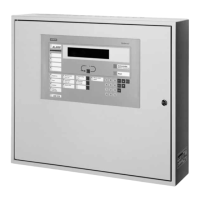
